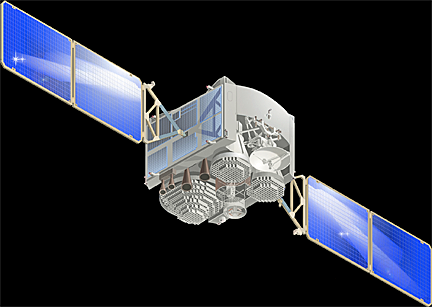

Talk about a difficult communications environment — the remote science station at Amundsen-Scott Station's location is directly at the South Pole at 90 degrees south, and maintaining continuous comms links are downright impossible to maintain, thanks to this extreme geographic latitude.
Thankfully, an oldie is truly a goodie as, nearly 21 years after launch, a Lockheed Martin-built satellite within the Defense Satellite Communications System (DSCS) recently acquired a new mission, to support this National Science Foundation (NSF)’s station at the South Pole. There are as many as 100 researchers who call this location home and the frustration level uploading and downloading valuable research data and other important communications can only be imagined by others not present at Amundsen-Scott Station.

Amundsen-Scott Station photography is courtesy of the
National Science Foundation (NSF).
In June, the US Air Force’s DSCS III B7 satellite took over the role of providing communication and data links between Amundsen-Scott and the US Antarctic Program facility in Christchurch, New Zealand, which serves as the station’s link to the rest of the world. Replacing the NSF’s decommissioning GOES-3 satellite, DSCS III B7 provides the station with Internet access for 3.5 hours a day at speeds of up to 30 megabits per second (MBPS), an upgrade from about 1.5 MBPS they had under GOES. DSCS III B7 has already begun relaying health and welfare data links to and from the remote facility. In June, the satellite played a key role in relaying telemedicine data leading up to the medical evacuation of two NSF employees in need of additional medical care.

Artistic rendition of the US Air Force's DSCS III B7 satellite. Image is courtesy of Lockheed Martin.
Originally built by Lockheed Martin and launched on July 31, 1995, with a ten year-design life, DSCS III B7 builds on the constellation’s reputation for providing extended service life. Six on orbit DSCS III satellites remain operational, with more than 259 years of combined service life, already providing nearly 120 extra years of mission life. Lockheed Martin sustains the DSCS constellation, as well as the Advanced Extremely High Frequency (AEHF) system and Milstar blocks I and II, under the Air Force’s Combined Orbital Operations Logistics Sustainment (COOLS) program.
“The DSCS constellation has been a legacy workhorse for the U.S. military's super-high frequency communications,” related Chris Ayres, the director of Operations, Sustainment and Logistics at Lockheed Martin Space Systems. “Now operating past twice its design life, it is gratifying to see DSCS III B7 still delivering value, providing significant return on investment by furthering scientific research and providing potentially life-saving communications with a location that is otherwise unreachable.”

